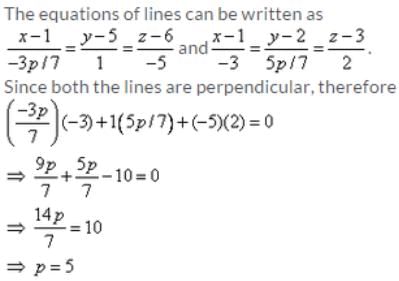JEE Exam > JEE Tests > Mathematics (Maths) for JEE Main & Advanced > Test: Skew Lines - JEE MCQ
Test: Skew Lines - JEE MCQ
Test Description
10 Questions MCQ Test Mathematics (Maths) for JEE Main & Advanced - Test: Skew Lines
Test: Skew Lines for JEE 2025 is part of Mathematics (Maths) for JEE Main & Advanced preparation. The Test: Skew Lines questions and answers have been
prepared according to the JEE exam syllabus.The Test: Skew Lines MCQs are made for JEE 2025 Exam. Find important
definitions, questions, notes, meanings, examples, exercises, MCQs and online tests for Test: Skew Lines below.
Solutions of Test: Skew Lines questions in English are available as part of our Mathematics (Maths) for JEE Main & Advanced for JEE & Test: Skew Lines solutions in
Hindi for Mathematics (Maths) for JEE Main & Advanced course. Download more important topics, notes, lectures and mock
test series for JEE Exam by signing up for free. Attempt Test: Skew Lines | 10 questions in 10 minutes | Mock test for JEE preparation | Free important questions MCQ to study Mathematics (Maths) for JEE Main & Advanced for JEE Exam | Download free PDF with solutions
Test: Skew Lines - Question 1
Two lines whose direction ratios are a1, b1, c1 and a2, b2, c2 are parallel, if
Detailed Solution for Test: Skew Lines - Question 2
Test: Skew Lines - Question 3
The shortest distance between the lines whose equations are  and
and  is:
is:
Test: Skew Lines - Question 4
Two lines whose direction ratios are a1,b1,c1 and a2,b2,c2 are perpendicular, if
Detailed Solution for Test: Skew Lines - Question 4
Test: Skew Lines - Question 5
The shortest distance between the parallel lines whose equations are and
Test: Skew Lines - Question 7
The angle between the lines x = 2y = – 3z and – 4x = 6y = – z is:
Detailed Solution for Test: Skew Lines - Question 7
Test: Skew Lines - Question 8
The angle between the lines whose direction cosines are given by the equations 3l + m + 5n = 0, 6nm - 2nl + 5lm = 0 is:
Detailed Solution for Test: Skew Lines - Question 8
Detailed Solution for Test: Skew Lines - Question 10
|
209 videos|460 docs|187 tests
|
Information about Test: Skew Lines Page
In this test you can find the Exam questions for Test: Skew Lines solved & explained in the simplest way possible.
Besides giving Questions and answers for Test: Skew Lines , EduRev gives you an ample number of Online tests for practice
|
209 videos|460 docs|187 tests
|
Download as PDF





















